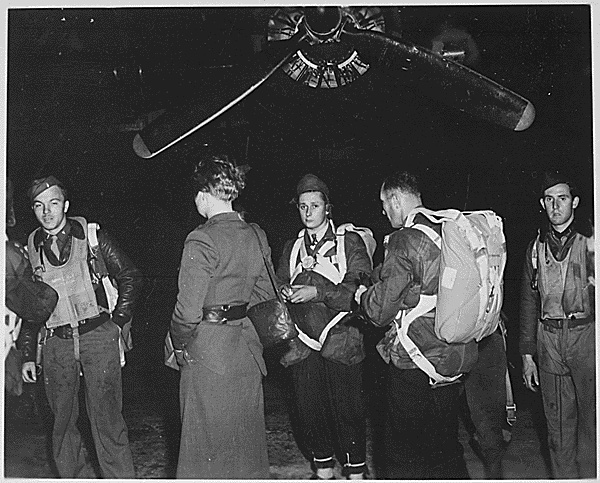Ulysses S. Grant.
Important Union Contributions:
· Brigadier General Benjamin Prentiss who commanded the 6th Division in the Union center. He was a critical first responder given that his was the most forward division. He would then move to the Hornet’s Nest.
· Major General John A. McClernand who commanded the 1st Division on the Union right flank. McClernand’s division faced some of the heaviest fighting early in the day as the Confederates launched their surprise attack. Despite being pushed back, McClernand’s forces fought stubbornly, slowing the Confederate advance and preventing an early collapse of the Union right flank.
· Brigadier General Stephen A. Hurlbut, who commanded the 4th Division.
Hurlbut’s division held a defensive position near the Union left flank, covering the approach to Pittsburg Landing.. His troops absorbed significant Confederate pressure and played a key role in protecting the Union army’s retreat and regrouping efforts.
Important Confederate Contributions:
· Major General Braxton Bragg, commander of a Confederate corps, whose aggressive leadership helped drive the Confederate advance early in the battle. He coordinated several assaults on key Union positions, including the Hornet’s Nest, which was crucial in breaking Union resistance in the center. Bragg’s relentless pressure contributed to the Union army’s retreat toward Pittsburg Landing.
· Major General William J. Hardee, who commanded the lead Confederate corps.
Hardee’s corps spearheaded the initial Confederate assault at dawn, achieving significant success in surprising and overwhelming the Union front lines. His leadership was instrumental in the early Confederate momentum, driving Union forces back several miles.
· Major General Leonidas Polk who commanded of a Confederate corps. Polk’s corps provided critical support during the Confederate attacks on the Union right flank. While his contributions were solid, Polk’s performance was less decisive compared to Bragg and Hardee. who were instrumental in executing the Confederate attacks, particularly in the early phases of the battle, and their actions shaped the battlefield dynamics.
Hornet’s Nest
A key defensive stand occurred at an area later known as the Hornet’s Nest, where Union forces under Prentiss and Brigadier General W.H.L. Wallace held off repeated Confederate assaults for several hours. This resistance bought critical time for Grant to organize a defensive line near Pittsburg Landing. The Hornet’s Nest was a name given to the area of the Shiloh battlefield where Confederate troops made repeated attacks against Union positions along a small, little-used farm road.. Southern soldiers said the zipping bullets sounded like angry hornets; according to tradition, one man said, “It’s a hornet’s nest in there.”
The narrow farm road ambles generally southeast from its junction with the Eastern Corinth Road (Corinth-Pittsburgh Road). Fairly level toward its northwest end, it makes a rather sharp climb up a hill near its center, descending again near the William Manse George cabin and the Peach Orchard. That hill, where Brigadier General Benjamin Prentiss commanded an ad hoc group of regiments, comprises the area of the Hornet’s Nest. To Wallace’s right was a division of Federals under Brig. Gen. W.H. L. Wallace, and to his left was another division under Brig. Gen. Stephen Hurlbut. Wallace held a position stretching along the farm road from the Eastern Cornith Road and up the slope to where Prentiss’s line began. Wallace’s men were in a deep ravine on the east side of the farm road; that area is now known as the Sunken Road. Often, but erroneously, the positions of Wallace and Prentiss are lumped together as the Hornet’s Nest. Confusing matters further is the fact that as the farm road passes over the hill where Prentiss had his command, it is sunken for a portion of its 600-yard length there.
Brigadier General W.H.L. Wallace commanded the 2nd Division. An Illinois volunteer soldier who was a lawyer in his civilian life, I believe a law partner at one time of Abraham Lincoln (they were friends, at least). Coolness under fire leading a brigade as a colonel at Fort Donelson had earned him a promotion to Brigadier General Wallace’s division also played a central role in defending the Hornet’s Nest, fighting alongside Prentiss’s men. Wallace was mortally wounded during the battle, but his leadership and the determination of his troops were crucial in holding the line for much of the day. Charles Ferguson Smith had been the division commander but developed a leg infection just prior to the battle. In fact, he died of it a couple of weeks later. General William HL Wallace took command, and ended up defending the Hornet’s Nest for 6 hours, eventually being killed there.
Wallace commanded the 2nd Division of the Army of the Tennessee. His division formed a critical part of the Union line, holding off repeated Confederate assaults. During the intense fighting in the late afternoon, Wallace was mortally wounded. A bullet struck him in the head as his troops were withdrawing from the Hornet’s Nest. He was left on the battlefield during the Union retreat but was later found alive by Union forces. Wallace was taken to a field hospital, but his injuries were too severe. He died on April 10, 1862, four days after the battle. His death was a significant loss to the Union army, as he was a respected and capable commander.
Benjamin Prentiss commanded the 6th Division of the Army of the Tennessee. Early on Day 1, his division bore the brunt of the Confederate surprise attack. Despite being initially driven back, Prentiss regrouped his forces and established a strong defensive position in the Hornet’s Nest, a dense thicket that became a focal point of the battle. Alongside W.H.L. Wallace, Prentiss held this position for hours, slowing the Confederate advance and buying time for Union forces to reorganize near Pittsburg Landing. Prentiss took full command of the position after Wallace was fatally wounded. Late in the afternoon, after being surrounded and running low on ammunition, Prentiss and his remaining troops were forced to surrender. Prentiss was taken prisoner along with about 2,200 Union soldiers. Prentiss was held as a prisoner of war until he was exchanged in October 1862. His leadership at the Hornet’s Nest earned him recognition for his bravery, despite his capture.
The defense of the Hornet’s Nest by Prentiss and Wallace delayed the Confederate advance, preventing them from reaching Pittsburg Landing and potentially destroying the Union army on Day 1. While both men suffered tragic outcomes—Prentiss as a prisoner and Wallace from mortal wounds—their actions contributed significantly to the Union’s ability to regroup and ultimately win the battle on Day 2. The Confederate forces launched repeated attacks on this strong Union defensive position, but it took hours and significant effort to overcome it. General Beauregard has been criticized for his conduct of this aspect of the battle because of the time delay it caused. He could have bypassed the Hornet’s Nest entirely and gone straight for Pittsburg Landing.
After the battle he was considered a hero, having held off the Confederate States Army long enough to allow General Grant to organize a counterattack and win the battle. Grant later played down Prentiss’s role in the victory, possibly because of mutual dislike between the two generals. He was exchanged in October 1862. Prentiss was promoted to major general and served on the court-martial board that convicted Fitz John Porter. His dissenting voice in the final vote damaged his political clout in the Army, and he resigned in 1863.
Colonel Randall L. Gibson commanded a brigade under Bragg. Gibson’s brigade launched multiple assaults on the Hornet’s Nest but was repelled repeatedly with heavy losses. His inability to break the Union line underscored the strength of the Union position and the difficulty of the Confederate task. While Gibson would go on to become a long-serving brigade commander with a solid service record, Braxton Bragg (the man who ordered the repeated charges) would fault him and bring him up on charges after the battle. He had graduated Yale as valedictorian, a member of Skull and Crossbones, and the son of a wealthy plantation owner. An interesting factoid about Gibson is that his great-great-grandfather was a free man of color whose descendants were able to integrate into Louisiana’s white society. He would go on to be the US Senator from Louisiana who was instrumental in ending Reconstruction.
An artillery barrage organized by the Ruggles Brigade ultimately caused the Union line to break and the Union line was broken with units heading to the rear. Ruggles’ Battery, not an actual unit but a Napoleonic style Grand Battery collecting numerous artillery units under the direction of Confederate division commander Daniel Ruggles. Brigadier General Daniel Ruggles lined up eleven batteries of cannon (62 in all according to Ruggles, 53 according to other sources) and bombed the hell out of the Union troops for nearly an hour beginning at 4:30 PM on April 6th. At the time, this was the greatest concentration of artillery pieces on a North American battlefield.
An uncoordinated double envelopment was in progress. The Confederates eventually surrounded and overwhelmed the Hornet’s Nest, capturing Prentiss and many of his men. However, the delay proved crucial for the Union. Although Prentiss and most of his men were eventually surrounded and captured, their stubborn defense significantly delayed the Confederate advance, allowing Grant to organize a stronger line closer to Pittsburg Landing.
The Death of Albert Sidney Johnston
Johnston personally led a critical charge during the afternoon, inspiring his troops and helping to push Union forces back. A bullet to the back of his knee killed Johnston, where the popliteal artery is located. This wound should not have resulted in death; a simple tourniquet would have been lifesaving. Unfortunately, the wound went unnoticed until too late.
The death of Albert Sidney Johnston of course was a major event in the war; the Confederate western theater never really found its general. Johnston was shot while leading a charge. Why the commanding general was doing this has been speculated about ever since. His losses at Fort Donelson and Henry, and the criticism following his abandoning Nashville certainly occupied his mind. Johnston was killed by a bullet to the back of his knee, where the popliteal artery is located. Unfortunately, the wound went unnoticed until too late because Johnston had received a wound to that leg in the Mexican War, decreasing his sensation. Meanwhile, the bleeding became severe and filled his boot with blood. Essentially he exsanguinated on the field from what ought to have been a non-fatal wound. This wound should not have resulted in death; a simple tourniquet would have been lifesaving.
Lew Wallace
A casualty of a different kind was the Union general Lew Wallace. Wallace took a road that was correct if the lines were where they had been at the start of the day but by the time he arrived, those lines were pushed back and so Wallace was behind enemy lines. Thus, he had to countermarch. He never did arrive on day 1 but he was very effective on day 2. Grant never really forgave him; only in his autobiography, after Wallace died, did Grant recognize that he had misinterpreted the situation. Wallace spent years trying to make up for the supposed error, a theme he used in his famous novel Ben Hur.
Lew Wallace is one of the most interesting men who came out of the war, and we have done extensive challenges on almost every aspect of his life. The nature of the misunderstanding that would change his life forever occurred in a flash: at Crump’s Landing, Grant verbally ordered Wallace to the battlefield but didn’t clearly specify what road to take. Wallace ended up on the wrong one (see map). He never did arrive on day 1 (until 7 pm) and Grant never really forgave him. I have read Wallace’s autobiography, and Grant’s Battles and Leaders article and of course his Memoirs. It all seems like a mix-up of the kind the fog of war will inevitably produce, and way too complicated to review here. Unquestionably, Grant tried to blame Wallace for his day 1 mishaps for many years. Only in his autobiography, after Wallace died, after the wife of the other General Wallace, Mrs. WHL Wallace, sent Grant information that bore out Lew Wallace’s explanation, did Grant recognize that he had misinterpreted the situation. Wallace spent years trying to make up for the supposed error, which was not really his fault, a theme he used in his famous novel Ben Hur. In the interim, Wallace saved Washington DC at the Battle of Monocacy, served as governor of New Mexico territory, and diplomat to the Ottoman Empire. Ben Hur became one of the best sellers of the century, making Wallace a wealthy man, so he did quite well for himself despite it all. He is one of my favorite Civil War characters. And we are not done with him here either.
Evening
Grant’s back was to the river; he could have been entirely destroyed. His defense at Pittsburg Landing in the afternoon of day 1 saved his army. By evening, Grant had established a strong defensive line near Pittsburg Landing, supported by artillery and the Tennessee River. The presence of Union gunboats added firepower, repelling further Confederate advances. Generals Hurlbut and McClernand contributed to this final defensive stand, ensuring the Union army survived the first day of battle.
General Beauregard, confident in the day’s success, decided to halt the attack for the night, believing the Union army was on the verge of collapse. However, this decision allowed Grant to regroup and prepare for a counterattack.
The first day of Shiloh was chaotic and bloody, with heavy casualties on both sides.
The Confederates had pushed the Union forces back significantly but failed to achieve total victory. The ferocity of the fighting on Day 1 shocked both sides and marked Shiloh as one of the war’s most brutal battles.
That night, reinforcements from Buell’s Army of the Ohio began arriving, giving Grant the strength to launch a counteroffensive on April 7.
Sherman commanded 5th Division, which was stationed at Shiloh Church on the Union right flank. His division was among the first to face the Confederate onslaught. Despite being surprised and initially overwhelmed, Sherman quickly rallied his troops and organized a defense to slow the Confederate advance. His division absorbed significant pressure, buying time for other Union units to organize and retreat toward Pittsburg Landing.
Shiloh was quite possibly Sherman’s best day of combat command during the war. After being wounded in Rea Field, he galloped back to his camps and got his brigades in line (some were already up and forming) along a ridge overlooking a creek (variously know as Shiloh Branch, Rhea Creek, or Rea Creek). He was able to hang on here (joined by one brigade from McClernand on his left) from 7 a.m. until 9:30 or so, repelling a series of uncoordinated single-brigade attacks from four Confederate brigades. Eventually the position was flanked on the left, and Sherman and McClernand fell back to the Hamburg-Purdy Road. Between 10:30 and 11:30, this position was attacked by a force that one source characterized as “two-thirds of the Confederate army” and driven back to Jones Field. Sherman and McClernand then carried out the only Federal counterattack of the day, driving the enemy back before losing steam and retiring back to Jones Field in the early afternoon. In the middle of the afternoon they retired further, across Tilghman Branch..
Sherman demonstrated remarkable composure under fire, personally leading counterattacks and encouraging his men despite being wounded in the hand and shoulder. His ability to maintain discipline and inspire confidence among his troops helped prevent a total rout of the Union right flank. Sherman worked closely with McClernand, whose division was positioned near his own, to establish a series of defensive lines as they fell back under Confederate pressure. Their combined efforts helped slow the Confederate advance and delayed a complete Union collapse.
As the Union forces were pushed back toward Pittsburg Landing, Sherman played a key role in organizing the final defensive line. His leadership ensured that his battered division held its position, contributing to the Union army’s survival at the end of the first day.
Premium IPTV Experience with line4k
Experience the ultimate entertainment with our premium IPTV service. Watch your favorite channels, movies, and sports events in stunning 4K quality. Enjoy seamless streaming with zero buffering and access to over 10,000+ channels worldwide.
















